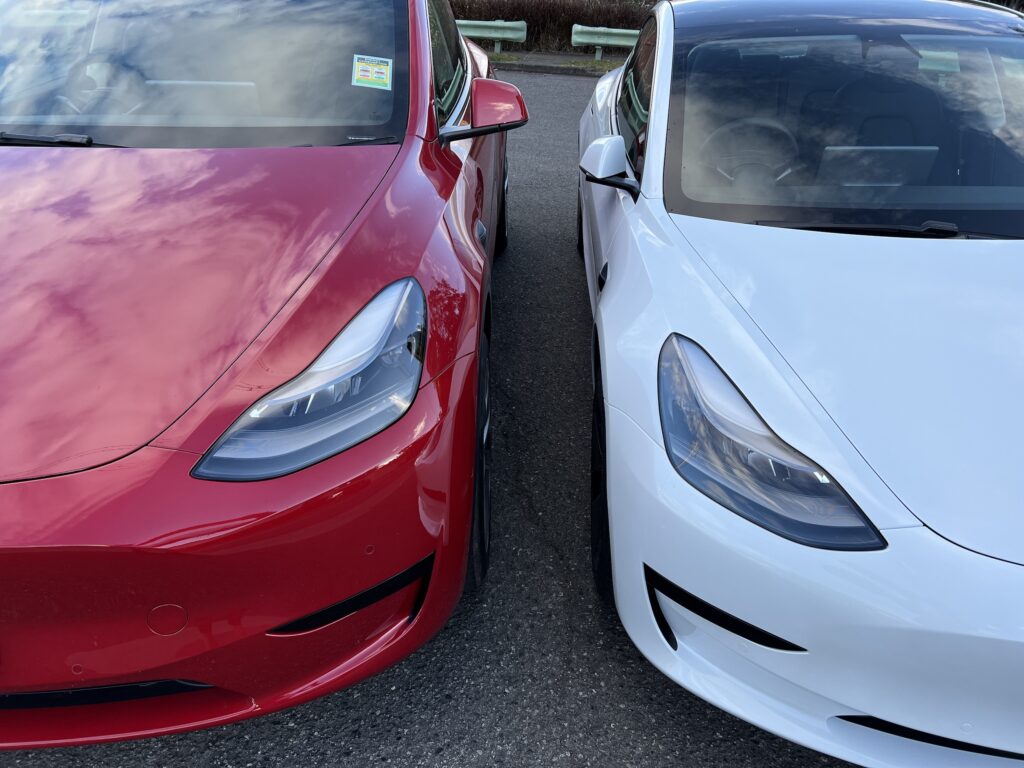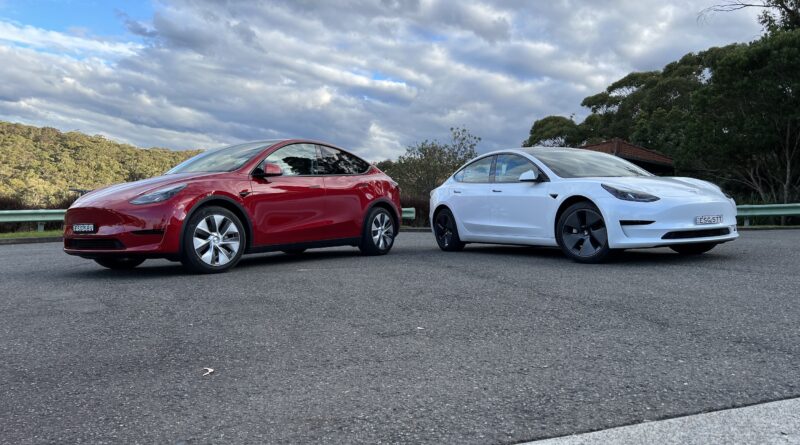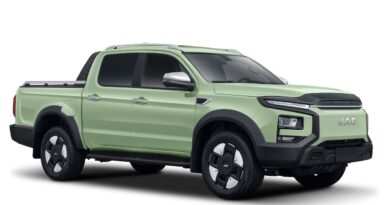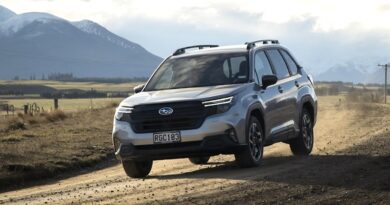Tesla Model Y vs Tesla Model 3: Which is the best EV for you?
The Tesla Model Y is the biggest news in the emerging Australian EV market for 2022. But does it live up to the hype? Or are you better off sticking with your Model 3?
Because while it arrives to face a barrage of fresh-faced competition, the biggest challenge for the electric SUV arguably comes from within in the form of the Tesla Model 3.
The two share the same electrical architecture and the same batteries and drivetrains. Many components inside are also identical. They come out of the same Chinese factory and share a familiar family resemblance, the Y trading some low-slung sportiness for more high-riding visibility and access.

So which new Tesla is best, and which is best for you?
- Read our in-depth Tesla Model 3 review
- Read our in-depth Tesla Model Y review
- How long will you wait for your Tesla Model Y?
Model 3 vs Model Y: Size matters
The Model Y is 181mm taller than the 3, something that makes for a lot more headroom for those in the back seat. It also creates a more upright look that includes a large plastic shroud over the lower part of the rear bumper.
One of the biggest differences between the Tesla Model Y and Model 3 is in width. But don’t go expecting extra girth across the cabin.
The Model Y’s additional 72mm are all pumped into the guards and wheel arches. Look at the front of a Model Y and between the two upper crease lines there’s a lot more width before it tapers down over the wheel arch.

Similarly, the rear wheel arches of the Y flare out more to improve the stance from the rear of the car. It’s subtle, but without it the Y would look more upright and gangly.
The wider arches mean left and right wheel positions also need to be adjusted.
On the Model 3 the track front and rear is 1580mm, whereas on the Y it’s 1636mm. So the left and right wheels are further apart.

We took a tape measure to the interior of the car to work out what’s different. The short story is there’s not much up front. The centre console, dashboard, 15-inch touchscreen and major controls are all identical.
Even the front seats look the same, although those in the Model Y sit a lot higher. They’re perched on runners that sit well above the door sill, making the seat base around 125mm higher than those of the 3.
Ground clearance on the Y is 17mm above the 140mm limit of the 3. Combined with the higher seat height in the car it means less ducking to get in.
More in the rear of the Model Y
We also took a tape measure to each car to determine which car offers more space and where.
Unsurprisingly there are differences all around, starting with the higher positioning of the front seat (around 140mm once you factor in the additional ground clearance of the Y).
But it’s in the back seat where the differences are most obvious.
While there’s no difference in the cabin presentation between 3 and Y up front, in the back it’s quite different.

The rear seat backs and bases are unique to each car.

Overall back seat width is identical between 3 and Y. But the outer back seats are narrower in the Y than those in the 3, which in turn gives a bigger space for the middle seat occupant, keeping in mind that the overall seat width is identical.
The taller roof of the Y also means more headroom for those in the rear. Our tape measure suggested something like 55mm more. Plus the Y has a fully glass roof for an expansive view of the sky, whereas the 3 has a support beam running across the centre of the roof.
Part of the change with the back seat also unleashes more loading flexibility. The Model Y has a 40/20/40 split-fold functionality. That means you can fold that centre section down to poke skis or a surfboard through and still have four people occupying the outer seats.
And boot space is very different between the two.
That starts with the load space opening; being a sedan, the 3 has a narrow opening that’s makes loading bikes or other bulky items trickier.

The Y’s tailgate is hinged at the roof so has a vast opening, albeit one that doesn’t have a cover, so people can see what you’ve loaded in the boot.
The 3 only has a deeper pocket on the left-hand side of its boot, whereas the Y gets ones on either side – and at around double the depth of the single one on the 3.
Storage space below the boot floor also swings in the Y’s favour. As well as being around 80mm longer and 200mm wider it’s about 60mm deeper, so will swallow lots more, including small bags.
There’s an extra 10mm-or-so (a single centimetre) in width and length of the Y’s boot floor, but they’re almost identical.

The biggest difference is that the 3 gets a 130mm lip between the load area and the floor itself, whereas for the Y it’s flat.
Pop the bonnet and the Y wins again. Each shares the same basic plastic cavity with identical width and length, but the Y’s is around 120mm deeper, making it easier to stash a bag or two in the froot (front boot).
Tesla’s own figures reinforce those differences. Will all five occupants in play the Y is claimed to have 854 litres of load area behind the back seats whereas the 3 gets 561L.

Up front, the Y has a 117L space versus 88L for the 3.
That makes total cargo capacity 971L for the Model Y and 649L for the Model 3.
The Tesla Model Y can tow
The Model 3 has the ability to tow overseas but it is not designed to tow in Australia.
Oddly, Tesla has certified the Model 3 to tow up to 1000kg, but the owner’s manual clearly states the car is not designed to tow and that doing so could be dangerous.
Not so with the Model Y, which is designed to tow up to 1600kg. The giveaway is the big black plastic part of the lower rear bumper signifying the area where a tow hitch can be fitted.

There’s one catch for now: you can’t buy the hardware (tow hitch and tow ball) required to do that towing.
But Tesla says it is coming in 2023.
There are also aftermarket companies (such as EV Stealth Solutions) working on a tow kit for the Model Y.
Short story is the Model Y will be able to take small camper trailers or boats or a box trailer – and be set up for bike rakes and other accessories that utilise a tow point.
Of course, as with all EVs, expect a significant reduction in range if you are towing. But at least the Model Y can tow something!
You’ll pay more for a Model Y
Tesla prices change fairly frequently. Throughout 2021 they mostly dropped and for the first half of 2022 they’ve been rising.
But we wouldn’t expect the relativity between Model 3 and Y to change markedly; in increasing the price of the Model Y just a week after it went on sale Tesla also increased the price of the Model 3 to match.
Short story: you’ll pay more for a Model Y.
Before the order and delivery fees ($1725 for each model) the entry to the Model Y range is $72,300 for the Rear-Wheel Drive whereas the Model 3 Real-Wheel Drive is $65,500.
That makes the Y almost bang-on 10 percent more expensive than the 3.
But, crucially, the Model 3 is potentially eligible for EV rebates and incentives, depending on where you buy it. The most generous rebate the Model Y RWD can get is the stamp duty refund (circa $2700) in NSW.
In the Performance models of each it’s a similar story, albeit with less of a gap.
The Model Y Performance is $104,054 (including Luxury Car Tax) before on-road costs while the Model 3 Performance is $97,424. That makes the Y almost 7 percent more expensive.
Short story is you’ll always pay more for an equivalent Model Y compared with a Model 3.
But you’ll get more in a Tesla Model Y
At the entry-level end of the Tesla Model Y range, it comes very generously appointed – moreso than the 3 Rear-Wheel Drive.
Both get heated seats all round, a heated steering wheel, electric front seats, panoramic sunroof, electric front seats, powered tailgate/boot and the best connectivity in the business. Both also get the (vaguely) leather-look seats that have nothing to do with animals. Plus there are eight exterior cameras (three facing forward, two on each side and one on the rear); most are used for Autopilot semi-autonomous drive features, while others are for parking and driving assistance.

The Model Y also gets a small interior camera to monitor driver attentiveness. While there have been concerns regarding privacy overseas, the owner’s manual states: “By default, images and video from the camera do not leave the vehicle itself and are not transmitted to anyone, including Tesla, unless you enable data sharing. If you enable data sharing and a safety critical event occurs (such as a collision), Model Y shares short cabin camera video clips with Tesla to help us develop future safety enhancements and continuously improve the intelligence of features that rely on the cabin camera. Data may also be shared if diagnostics are required on cabin camera functionality. Cabin camera does not perform facial recognition or any other method of identity verification. To protect your privacy, cabin camera data is not associated with your vehicle identification number.”
The Y also gets a better sound system. As well as a subwoofer and two speakers in the tailgate, it also has mid-range speakers in the corners of the front windows and at the top of the A-pillar (on either side of the windscreen). It adds to the door speakers and tweeter speakers at the front of the dash that are also in the Model 3.

No surprises that it sounds better, with more punch to the bass, although the 3 RWD still has a great standard sound system.
The Y RWD also picks up ambient lighting and a hospital-grade HEPA filter to clean the air in the cabin. Plus there are 19-inch wheels versus the 18s on the entry-level Model 3; in both instances there are decent-looking alloy wheels behind plastic wheel covers, chosen for their aerodynamic efficiency.

Speaking of which…
3 vs Y: Which is more efficient
We took each of our cars on the same 11-kilometre urban loop. Same day, same driver, same driving style and same settings for ventilation and driving modes.
Each car was a 2022 Rear-Wheel Drive with less than 500km on the odo, so in both instances the batteries were basically brand new.
No surprises that the Model 3 was more efficient, using an average of 13.5kWh/100km around the undulating loop.

The Model Y used 14.4kWh/100km across the same loop.
That means the Y uses a little under 7 percent more electricity.
Or, to look at it another way, the 3 should be able to travel about 7 percent further on a charge.
Blame it partly on weight and to a lesser extent on aerodynamics. The Model Y weighs 1909kg versus 1752kg, a full 157kg penalty.

It’s also worth keeping the higher electricity use in perspective.
At 14.4kWh/100km the Y is still more efficient than other electric SUVs we’ve tested.
Assuming 15,000km driven annually the 3 would cost $607.50 if you were paying 30 cents for every kilowatt-hour of electricity.
The Y would cost $648 for the same distance.
Forty bucks shouldn’t break the bank for most families and we reckon most would be happy with that for the additional space and practicality.
So you’ll travel further in the 3
The Model 3 is lighter and has less air to push out of the way.
So it needs less energy than the Model Y to achieve the same thing.
Sure, the 3 and Y share the same aerodynamic drag coefficient of 0.23, but there’s a taller, wider body in the Y. So even though it’s shape is slippery it’s having to shift more air.
Between them it means the 3 will travel further between charges.

Tesla claims the range of the 3 Rear-Wheel Drive is 491km versus 441km for the Y Rear-Wheel Drive.
In the Performance variants there’s less difference but still an edge to the Model 3.
The Model 3 Performance the WLTP range is claimed at 547km, whereas for the Model Y Performance it’s claimed at 514km.
Our around-town back-to-back of the Rear-Wheel Drive models suggests there wasn’t as big a difference, but that could change on the open road once aerodynamics play a bigger role.
The extra height changes the Tesla dynamic
Both the 3 and Y and relatively firmly sprung. It’s all about endowing them with sharp reactions, something accentuated by the direct and responsive steering.
But there are differences in the behaviour, especially over bumps.
The Y is riding on 19-inch wheels with 255/45 tyres. That means there’s about 115mm of tyre sidewall cushioning bumps.
The 3 gets 18-inch wheels with 235/45 rubber, which translates to a sidewall depth of about 106mm.

Yet somehow the Hankook Ventus S1 Evo 3 tyres on the Model Y seem to lack the initial compliance of the Michelin Pilot Sport 4 rubber on the Model 3.
Part of it could come down to the height of the cars.
In the Model Y you’re sitting a lot higher so any reaction to a bump is going to be amplified slightly by the time it reaches the occupants.
So it’s a win to the Model 3 for the way it deals with bumps.
Model 3 vs Y: Which is quicker?
We’ve always found Tesla a tad optimistic with their performance claims, although to be fair they appear to be getting closer to reality.
We tested both our 3 and Y using a Vbox satellite-based performance tester. Same road although the testing was done on different days.
Short story is there’s not miles between them.
Yes, the Model 3 is quicker. We expected that given the drivetrains are identical and the Y is heavier by 157kg.
Both use a single electric motor driving the rear wheels and both have a 9:1 reduction gear.
Each is also powered by the same circa-60kWh lithium-iron phosphate (LFP) battery pack.
There were some surprises, though. Both were almost inseparable up to 50km/h.
But as speed increased the Model 3’s advantage was more obvious.
To 100km/h the 3 took 6.31 seconds whereas the Y took 7.17 seconds.
Breaking out the 60-100km/h bracket that is common for overtaking or accelerating onto a freeway the 3 again had an advantage, taking just 2.49 seconds versus the Y’s 3.05 seconds.
It’s also interesting looking at claimed top speeds (no, we didn’t get to test them).
The Model 3 is claimed to hit up to 225km/h versus 217km/h for the Y.
Given weight doesn’t influence top speed, only acceleration – and given the two are identical from a drivetrain perspective it means there are other factors at play.
The most obvious are aerodynamics and tyres.
The Y’s larger body means it has more air to shove out of the way. So even though it shares its 0.23 coefficient of drag with the Model 3, its larger frontal area means there would be more drag.
Tyres that are 20mm wider would also play some role in aerodynamics.
Plus, there could be a difference in rolling resistance of the tyres, something that is very difficult to test without a laboratory.
| Acceleration time (seconds) | Tesla Model 3 | Tesla Model Y |
| 0-10km/h | 0.80 | 0.66 |
| 0-20km/h | 1.35 | 1.34 |
| 0-30km/h | 1.84 | 2.03 |
| 0-40km/h | 2.72 | 2.73 |
| 0-50km/h | 3.30 | 3.42 |
| 0-60km/h | 3.82 | 4.12 |
| 0-70km/h | 4.34 | 4.81 |
| 0-80km/h | 4.93 | 5.50 |
| 0-90km/h | 5.53 | 6.30 |
| 0-100km/h (claimed) | 6.31 (claim: 6.1 seconds) | 7.17 (claim: 6.9 seconds) |
| 60-100km/h | 2.49 | 3.05 |
Which is best, Model 3 or Model Y?
Either way you jump you’re getting one of the best EVs on the market.
Clearly families and those wanting to carry large items regularly will be better suited to the Model Y.
There’s loads more space for gear and if the kids are getting into their lanky teenage years they’ll appreciate the better back seat headroom.
But the Model 3 still holds up very well. It’s more enjoyable to drive courtesy of its lower stance and has the edge (just) on performance and efficiency, although the latter is a moot point.

Crucially, the 3 is also a lot more affordable – and some may also prefer the look. Not only are you saving on the price Tesla charges but the entry-level Model 3 is still under the EV rebate threshold in most parts of the country, potentially leaving another $3000 (or more) in your bank account.
Either way, there’s a good chance the Model 3 and Model Y will account for the bulk of EV sales in Australia in the short term.
Tesla Model 3 Rear-Wheel Drive advantages
- More affordable
- Better chance of taking advantage of EV rebates
- About 7 percent more energy efficient
- Slightly better performance
- Lower ride height means less lateral movement over bumps
- Fully covered load area
Tesla Model Y Rear-Wheel Drive advantages
- Better sound system
- More features, including ambient lighting and HEPA filter
- More back seat headroom
- Higher seat height for easier entry/exit
- Centre back seat can be folded down improving load flexibility
- Larger boot and ‘froot’
- By 2023 it will be able to tow
Tesla Model 3 Rear-Wheel Drive specifications
Price: $65,500 plus on-road costs
Basics: EV, 5 seats, 5 doors, sedan, RWD
Range: 491km
Battery capacity: 60kWh (estimated)
Battery warranty: 8 years/160,000km (guarantee of 70% of original capacity)
Energy consumption: 13.4kWh/100km
Motors: 1 rear 194kW/340Nm
AC charging: 11kW, Type 2 plug
DC charging: 250kW (estimated peak), CCS combo plug
0-100km/h: 6.1 seconds (claimed)
Tesla Model Y Rear-Wheel Drive specifications
Price: $72,300 plus on-road costs
Basics: EV, 5 seats, 5 doors, SUV, RWD
Range: 455km
Battery capacity: 60kWh (estimated)
Battery warranty: 8 years/160,000km (guarantee of 70% of original capacity)
Energy consumption: 14.6kWh/100km
Motors: 1 rear 194kW/340Nm
AC charging: 11kW, Type 2 plug
DC charging: 250kW (estimated peak), CCS combo plug
0-100km/h: 6.9 seconds (claimed)





What a great and thorough review! Thank you very much!
Having owned a Model 3 for over three years in Europe and almost 3 years in Australia, I found the Model Y just too big for our narrow and congested streets.
While I’d love to have the more accessible boot space I’d rather a Model 3 wagon or hatch than such a large vehicle.
So, I’m waiting of the smaller hatch that Tesla may produce one day or will opt for one of the more realistically sized European models in the pipeline.